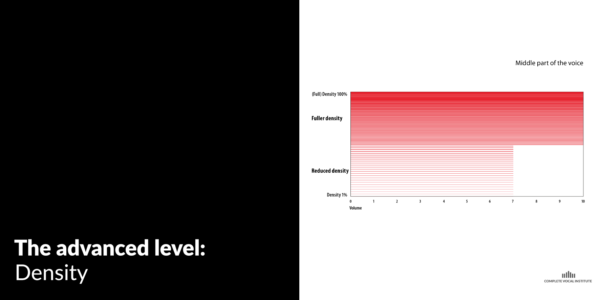We can talk about the density of a note by describing its degree of ‘compactness’, the degree to which the note is ’filled out’, how ’solid’ or ’weighty’ it is, or perhaps how much ’core’ or ’foundation’ the note has. If the note is completely ’filled out’, we will call it fuller density. We can compare it with a bottle that contains water. The bottle itself is the full note, the water in the bottle symbolises the tone, and the space in the bottle not filled by water is ‘empty space’. The amount of water in the bottle symbolises the degree of density in the note – how much the note is filled with tone. If there is only a little water in the bottle, there is a lot of space that is not filled by the water. This would mean the note would be less ’filled out’ – having reduced density. If the bottle is full of water, there is fuller density.
- About CVI & CVT
- Complete Vocal Technique
- Apps & Books
- Courses & Sign up
- Courses overview
- Online CVT Courses
- 3-year CVT Singer/Singing Teacher Diploma Course
- 1-year CVT Singer Course
- Continous 1-year CVT Singer Course
- CVT Vocal Academy
- Continuous Vocal Academy
- 5-days CVT Course
- Add on seminars
- Solo Sessions
- Update Courses for Authorised CVT Teachers
- CVT Connect for Authorised CVT Teachers
- Rehabilitation
- Become a test singer
- Rehabilitation
- CVT Community
- Research
- Contacts
- About CVI & CVT
- Complete Vocal Technique
- Apps & Books
- Courses & Sign up
- Courses overview
- Online CVT Courses
- 3-year CVT Singer/Singing Teacher Diploma Course
- 1-year CVT Singer Course
- Continous 1-year CVT Singer Course
- CVT Vocal Academy
- Continuous Vocal Academy
- 5-days CVT Course
- Add on seminars
- Solo Sessions
- Update Courses for Authorised CVT Teachers
- CVT Connect for Authorised CVT Teachers
- Rehabilitation
- Become a test singer
- Rehabilitation
- CVT Community
- Research
- Contacts

